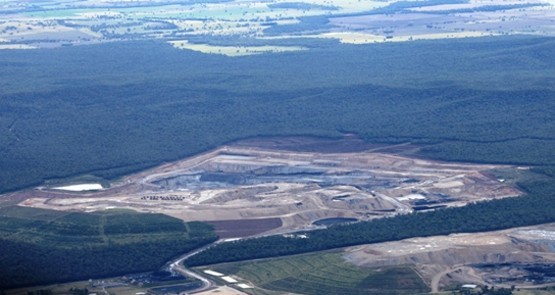
Shareholders in Australia’s biggest mining companies that only 12 months ago were considered unassailably “blue chip” have seen some relief to their agony over the past few trading days as mining shares bounced (dead cat?) off the floor ahead of Australia Day — but normal southward service has resumed.
Shareholders should not be anything less than furious with the mangers of the companies the shareholders own (a fact of which modern management commonly loses sight).
In fact, so abysmally incorrectly have the multimillionaire executives that run BHP Billiton and Rio Tinto read the industry — as well as the economy of their collective clear No. 1 customer, China — that shareholders should be either looking at class actions or, the very least, an active campaign for significant board renewal.
In the past 12 months shares in BHP have been in free fall, plummeting from $28.94 on January 28, 2015, to $15.01 at the market close on January 27, 2016. That is roughly $74 billion in market value that has been blown up.
Rio Tinto’s shares have performed better, but it’s all relative. They dropped from $56.80 to $39.11, another $50 billion or so eaten up by the commodities black hole. For what it’s worth, BHP is still worth about $10 billion more than Rio.
Both companies comprehensively misread the Chinese economy and the concomitant demand for steel, as well as copper, aluminium, coal and so on — core business, one would think.
BHP’s diversified portfolio, enthusiastically promoted by the company itself and its market cheerleaders, had made it the world’s premier mining company. That was supposed to be BHP’s saviour; if and when the world’s biggest commodities importer, China, went off the boil, its oil portfolio — most recently bolstered by a multibillion-dollar investment in US shale oil — would still be there.
The problem was that in a world where commodities went over a cliff in lemming unison, this is no risk-management strategy at all.
Now let’s think about this for a minute. The US shale oil boom was aimed at making the US economy self-sufficient in terms of energy production once more, and for sure it’s helped the US economy recover. Yet at the same time, it was an upstart producer challenging the status quo where the OPEC nations held sway as the world’s biggest oil exporters. The spectre of Iran was coming into the picture, too, once more able to join big oil, if it could just nail down a deal on its nuclear program.
Just what did the companies like BHP piling into US shale oil think? That OPEC would cut production to save the price, thereby giving away hard-earned market share?
Epic fail. Oil price crash. And so it was that BHP’s new year present to shareholders was a stinking $10 million write-off from its shale oil business. As usual, none of its executives or former executives will carry the can for this; that honour is left to the company’s duped owners — its shareholders, who have watched its share price collapse. Fracking hell.
But wait, there is more. BHP management has another black mark against its name in the deadly Samarco dam disaster in its Brazil joint venture with Vale, which cost not just a lot of money but, far worse, the loss of 17 lives. The two companies are now in talks for a US$5 billion compensation bill.
Coming up next month is the first test of whether BHP will further weaken its balance sheet in a vain attempt to maintain a dividend that will convince the market everything is just fine. Or it might bow to the reality of its self-inflicted fate, cut its dividend and face a further sharemarket shellacking.
It’s lucky for shareholders that Andrew Mackenzie’s predecessor, Marius Kloppers, was unable to diversify the company even further and get his pet deal: a $38.6 billion bid for Canada’s prosaically named Potash Corp.
Since 2010 the price of the main ingredient in plant fertiliser has been cut by about 70% and now sits at US$296 per tonne, well short of its early 2010 high of almost US$900 per tonne.
The dramatic cost cuts Australian iron ore miners have been able to institute when under price pressure have been nothing short of remarkable. Basic mining costs — the digging and moving of the ore to the ship (known as “C1 costs” in the industry) — have come down by 50 % in the past two years.
Yet perhaps the most remarkable thing about this is that they were so high in the first place, a sure sign that mining’s fat years made management lazy.
At the other end of the sector, the market is finally taking a more clear-eyed view of Fortescue Metals Group. Andrew Forrest, who has pulled hundreds of millions out of the company in dividends way ahead of time, will be OK, thanks very much, but it’s the shareholders who have hung on and not cashed out when the going was still good.
A report by analyst at Goldmans Sachs has this to say, concluding that debt-laden FMG’s shares are worth about half their $1.46 closing price on January 27:
“Overall we continue to see risks around FMG that are not reflected in the current share price. We believe FMG’s earnings will come under material pressure next year due to the combined impact of (i) falling iron ore prices; and (ii) increasing grade discounts.”
Last year, it was Switzerland’s Glencore and Anglo-South African miner Anglo American that made headlines for all the wrong reasons, and indeed those companies, like the rest of the sector, is in for years of pain. But it’s the big three Australian miners that are under the microscope, and the view, in close-up, is hardly flattering.
So shareholders — and that’s pretty much every Australian with market-weighted equities in their superannuation portfolios — should be very, very angry.








If they’re anywhere near as incompetent as you suggest, clearly there should be positions for them with the Crikey Commissariat, shouldn’t there.
It used to be a rule of thumb: If BHP or Telstra is buying then the market has peaked.
Meanwhile there is no peak oil, if anything there is much more hydrocarbon in the planet than we thought, and the world is moving to renewables.
I suspect that for BHP management, only having a hammer, everything looks like a nail.
Don’t worry Michael, I am angry, but sustaining that over the last 30 years hasn’t been easy. Big corporate management failures are thick on the ground over that time. The four major banks have all come close to collapse on the back of terrible management decisions and lack of understanding of risk.
What I am principally angry about is the extortionate salaries they pull in. Anyone can make a mistake, but when you get paid in the tens of millions of dollars, really, who cares, I’m alright Jack.
‘when you get paid in the tens of millions of dollars,’
If your bonus is fattened when achieving grandiose milestones, then what does it matter that the shareholders will suffer in a few years?
Who votes to pay these people their exorbitant salaries?
Fracking hell is surely all those leaking wells in the US.